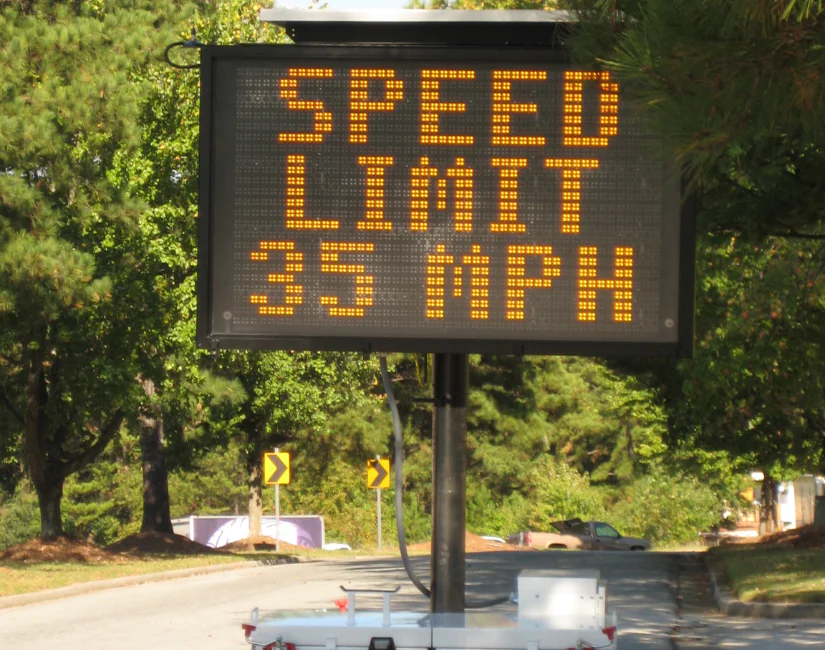At some point during a commute or road trip, every driver has seen some type of variable message sign above or along the side of the roadways. Variable message signs (VMS) are digital road signs that use LED lights that display a variety of changing messages to commuters. While they are sometimes attached to a pole or overpass, they can also be mobile-mounted on trailers and vehicles.
Variable message signs are known to be a highly effective way for law enforcement agencies to convey a wide range of informative messaging to the public. When equipped with traffic data collection tools, VMS systems can actually deliver valuable information back to the agencies to further support their programs.
Variable Message Signs Inform and Alert Drivers
VMS tools as a traffic enforcement tool were introduced in the 1950s and were used across the U.S. in their initial rollout. Today, law enforcement agencies use variable message trailers to communicate a range of messaging to drivers, some of which include:
- Speed limit reminders
- Warning about accidents
- Construction zone notices
- Heavy traffic alerts
- Lane and exit closure alerts
- Live reporting of anticipated commute times
In addition to helpful traffic information, variable message signs are also helpful for conveying public service messaging such as extreme weather warnings, evacuation notices, Amber Alerts, time change reminders, as well as prompts to buckle safety belts and keep vehicle doors locked.
VMS and Traffic Data Combined to Support Agencies
When variable message signs are combined with data collection tools, agencies can garner feedback that can be extremely helpful in a variety of ways. One example is how a fire department used data on message impressions to improve ISO fire ratings.
An ISO fire rating is a score designated to fire departments and insurance companies by the Insurance Services Office. The score measures how prepared a community and area is for fires and can affect the insurance premium of every homeowner in the area. While the score’s primary focus is on the local fire departments and water supply, other factors can contribute to an area’s score. The fire departments used VMS trailers to remind people to change their smoke detector batteries. They then counted the number of people who saw the messaging via the traffic statistics. This data was reported to improve the ISO fire ratings for the area.
No matter what the messaging, gathering data on how many drivers saw the variable message sign can help agencies use assets more effectively and keep their communities safer.
Kustom Signals SMART Messaging Trailers Offer Communication and Collection Capabilities
In cities, suburbs, and rural areas, Kustom Signals RADAR speed and messaging trailers are the ideal tools to increase speed awareness and convey other essential messaging. A variety of law enforcement and other civil agencies can benefit from these easily deployable devices.
Kustom Signals offers a traffic count feature as part of our optional traffic statistics package, which adds software and a tablet to the purchase. The trailer uses its built-in RADAR to count the number of drivers who have passed in both directions. The operator can connect remotely via phone/tablet to view the stats, allowing them to determine how many vehicles approached while a particular message was being displayed.
Kustom Signals traffic data software doesn’t require a recurring fee, which is a significant advantage over almost every other competing system. We do this to simplify budgeting since it’s a fixed cost, and you enjoy the benefit of ultimately paying less over time.
Learn More About How Kustom Signals Supports Agencies
Kustom Signals is here to assist law enforcement professionals with variable message signs and a wide range of tools that can be used to increase the effectiveness of traffic and public safety programs.
Request a quote to learn more about how we can assist your agency.

